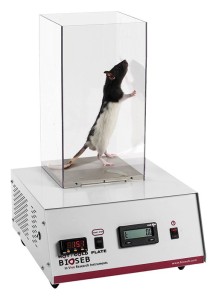Authors
A. Tappe-Theodor, C. Constantin, I. Tegeder, S. Lechner, M. Langeslag et al.
Lab
University of Heidelberg, Pharmacology Institut, Heidelberg, Germany.
Journal
Pain
Abstract
Peripheral injury or inflammation leads to a release of mediators capable of binding to a variety of ion channels and receptors. Among these are the 7-transmembrane receptors (G protein-coupled receptors) coupling to G(s), G(i/o), G__/__, or G(q/11) G proteins. Each of the G protein-coupled receptor pathways is involved in nociceptive modulation and pain processing, but the relative contribution of individual signaling pathways in vivo has not yet been worked out. The G(q)/G__ signaling branch is of particular interest because it leads to the activation of phospholipase C-_, protein kinase C, the release of calcium from intracellular stores, and it modulates extracellular regulated kinases. To investigate the contribution of the entire G(q/11)-signaling pathway in nociceptors towards regulation of pain, we generated double-deficient mice lacking G(q/11) selectively in nociceptors using a conditional gene-targeting approach. We observed that nociceptor-specific loss of G(q) and G__ results in reduced pain hypersensitivity following paw inflammation or spared nerve injury. Surprisingly, our behavioral and electrophysiological experiments also indicated defects in basal mechanical sensitivity in G(q/11) mutant mice, suggesting a novel function for G(q/11) in tonic modulation of acute nociception. Patch-clamp recordings revealed changes in voltage-dependent tetrodotoxin-resistant and tetrodotoxin-sensitive sodium channels in nociceptors upon a loss of G(q/11), whereas potassium currents remained unchanged. Our results indicate that the functional role of the G(q)/G__ branch of G-protein signaling in nociceptors in vivo not only spans sensitization mechanisms in pathological pain states, but is also operational in tonic modulation of basal nociception and acute pain.
BIOSEB Instruments Used
Cold Hot Plate Test (BIO-CHP)
Source :
http://www.painjournalonline.com/article/S0304-3959%2811%2900615-4/abstract

 Pain - Thermal Allodynia / Hyperalgesia
Pain - Thermal Allodynia / Hyperalgesia Pain - Spontaneous Pain - Postural Deficit
Pain - Spontaneous Pain - Postural Deficit Pain - Mechanical Allodynia / Hyperalgesia
Pain - Mechanical Allodynia / Hyperalgesia Learning/Memory - Attention - Addiction
Learning/Memory - Attention - Addiction Physiology & Respiratory Research
Physiology & Respiratory Research











![Dynamic Weight Bearing 2.0 – Postural Module [Add-on]](https://bioseb.com/733-home_default/dynamic-weight-bearing-20-add-on-postural-module.jpg)
























 Pain
Pain Central Nervous System (CNS)
Central Nervous System (CNS) Neurodegeneration
Neurodegeneration Sensory system
Sensory system Motor control
Motor control Mood Disorders
Mood Disorders Other disorders
Other disorders Muscular system
Muscular system Joints
Joints Metabolism
Metabolism Cross-disciplinary subjects
Cross-disciplinary subjects CONFERENCES & MEETINGS
CONFERENCES & MEETINGS 